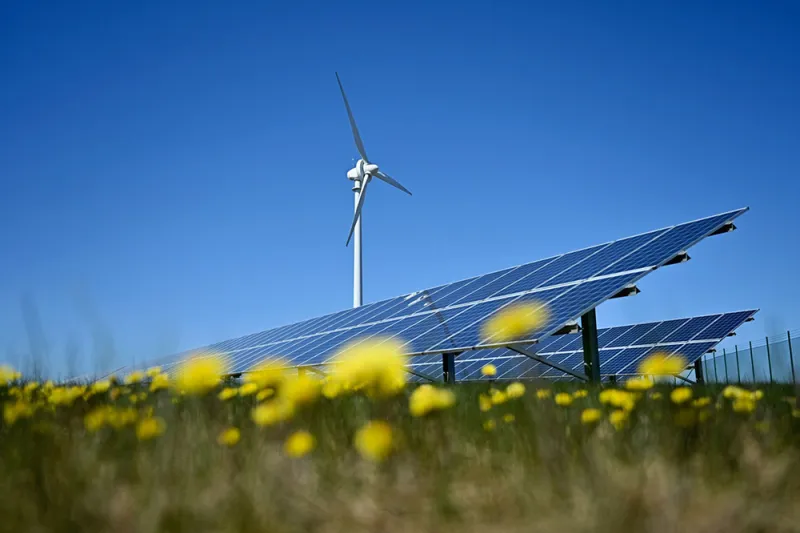The universe of environmental, social, and governance bonds has tripled in the past three years, reaching a total of $350 billion, according to two new reports from Morningstar. In 2020, ESG bond assets rose 66 percent, far outpacing the overall fixed income universe’s growth of 12 percent. But within the sustainable investment world, fixed income remains an underrepresented asset class.
While fixed income makes up 27 percent of the overall fund market, ESG bond funds currently account for less than one-fifth of total ESG fund assets. Morningstar analysts attributed this gap to a few factors, noting for example that “it’s early days” for ESG bonds. In fact, fixed-income practitioners only started to seriously consider ESG integration in their analyses about 10 years ago, according to Morningstar.
“The inherent complexity of bond markets, with their wide spectrum of different debt instruments, issuer types, and maturities, has held back ESG integration in fixed income, and thus also sustainable fixed-income products,” one report said. “This has been compounded by concerns over data availability, quality, and comparability, especially for sovereign debt.”
Analysts also pointed to overall lower levels of active ownership in fixed income as hurdle for ESG bonds.
“Despite all the challenges, however, ESG integration in fixed income has become more widespread in recent years,” Morningstar said in the report. “Investors have come to realize that ESG considerations are just as important in fixed income as they are in equity when it comes to identifying downside risk. Also, evidence is growing that the integration of ESG can create alpha in corporate bond markets and can even outperform non-sustainable investments.”
Green Bonds Only Make Up 0.2% of Fixed-Income Funds
Within the ESG bond universe, green bond funds are “the most popular investment vehicle to achieve impact” and comprise around $25 billion of total assets. But, outside of that market, they struggle to compete.Green bonds, debt issued by governments and companies to fund environmental and climate-based projects, have grown at an exponential rate since 2012, one report said. According to Morningstar, “assets with an explicit green bond objective” totaled $24.9 billion by the end of the first quarter of 2021. However, the debt class remains a niche section of the global bond market and struggles to compete with traditional fixed-income assets.
“Green bond funds still only represent 0.2 percent of assets in fixed-income investment funds worldwide,” the report said. “This is a 120 percent increase from $11.3 billion in 2019 and almost a fourfold increase from $6.3 billion at the close of 2018.”
The green bond investment fund universe is concentrated largely in Europe, which touts 58 active green bond funds and seven passive funds. For reference, the U.S. has five active funds and two passive. Canada has one active fund.
According to Morningstar analysts, the green bond market is a long ways away from replacing traditional bond exposure because of its skew toward euro-dominated bonds “at the expense of USD-dominated bonds” and its inclination toward corporate, agency, and supranational bonds in place of government bonds.
“When you look at green bonds, it’s basically raising money to dedicate that money to a specific project,” Benjamin Joseph, senior manager research analyst at Morningstar, told Institutional Investor. “Some people may not be interested in actually underwriting the sustainable product of a company, and they will probably prefer to underwrite just for the company’s business.”
Higher Risk and Lower Yield
The report also said that when compared with more traditional bond exposure, green bonds carry more credit risk overall. For instance, researchers found that global aggregate bond funds had a 37.6 percent exposure to AAA rated bonds, compared to a 25.5 percent exposure for green-bond-centric funds. Inversely, green bond funds had more exposure to BBB rated bonds: 25.5 percent versus 15.7 percent for global aggregate funds.“Investors in a passive global green bond portfolio would take on significantly more credit and duration risk compared with a traditional global aggregate bond portfolio,” the report said. “At the same time, they would be earning less yield compared with a traditional offering, while also giving up on some of the defensive characteristics associated with USD-denominated bonds (particularly U.S. Treasuries) that could otherwise serve as ballast in a risk-off environment.”
In the report, Morningstar analysts note that the asset managers they spoke to are thinking of green bonds less as a replacement for traditional bond funds and more as an “impact sleeve” — meaning the funds have a direct impact in financing sustainability and green energy projects — for their portfolios.
Joseph said he doesn’t believe the question is whether one has the wherewithal to replace the other. “If you think about the big picture, it’s not one or the other,” he said. “With sustainable investing, people are trying to ingrain sustainability concerns using everything, including finance and investment.”
In the end, Joseph said, the ultimate goal for sustainable investing is “no differentiation” between sustainable and traditional assets.







